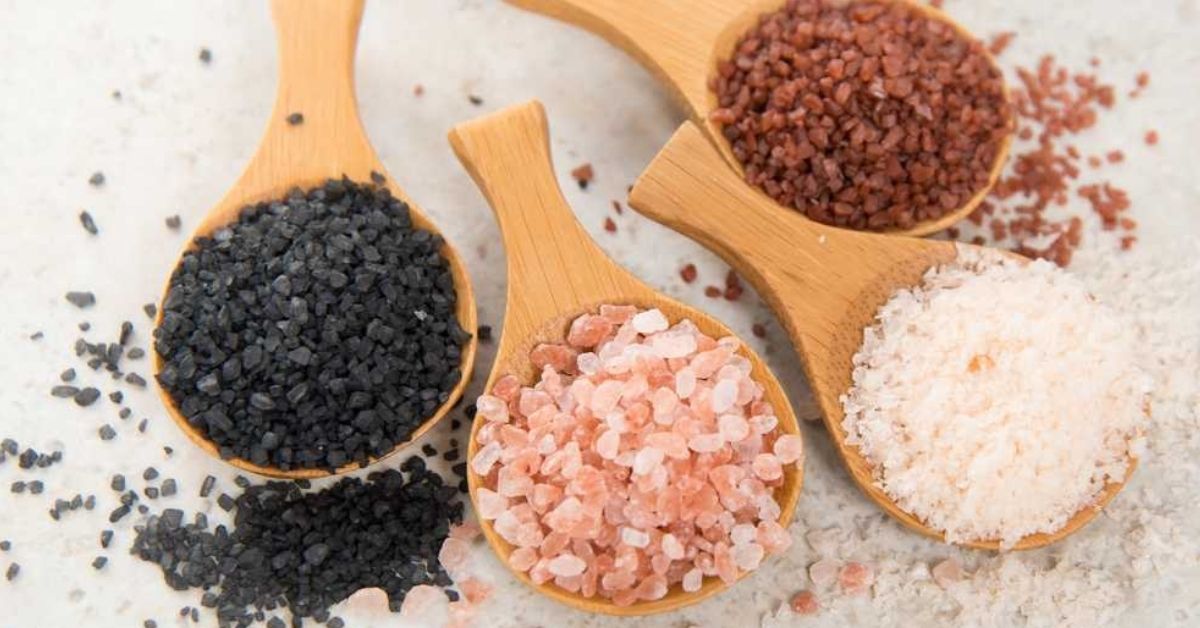Should You Replace Table Salt With Pink or Black Salt? Nutritionists Clarify
Table salt or rock salt is the most commonly used form of salt, while other forms such as Himalayan pink or black salt are more naturally occurring and packed with minerals. So which one is good for your health?

A pinch of salt is essential to enhance the taste of any dish. The mineral also plays a crucial role in several bodily functions. The sodium present in salt helps control blood pressure, improves nerve and muscle function, and preserves water balance in cells.
In fact, reports suggest that it is necessary for us to consume 500 mg of salt every day. But overconsumption can lead to high blood pressure, loss of calcium, and cause heart disease.
Table salt or rock salt is the most common form of salt used in daily cooking. It is extracted from the sea or salt mines and undergoes a fair amount of processing before being sold. One of the main processes here is adding iodine to the salt as it is an essential mineral for the human body. A lack of iodine in the body can lead to severe complications such as goitre and brain damage.
However, there are a variety of salts with different benefits. Apart from table and rock salt, other popular varieties found in Indian kitchens include the Himalayan pink salt (sendha namak) and black salt (kala namak).
How are these salts extracted?
Sendha namak, also known as halite, is formed when the saltwater from the sea or a lake evaporates. Once the water dries, it leaves behind colourful crystals packed with sodium chloride.
Primarily mined at the Khewra salt mine in Pakistan, this is cut by hand from large salt walls formed 5,000 ft below the Himalayan range. After experiencing thousands of years of pressure, the salt extracted is considered to be pure with 84 different elements and minerals. Being rich in iron is what gives this salt a pink hue.
Kala namak or black salt is another version of the Himalayan pink salt. However, this salt is heated to extremely high temperatures in kilns along with charcoal, harad seeds, amla and more to infuse certain therapeutic properties. During this process, the salt is also left with some impurities including traces of sulphides which gives it a pungent, rotten egg smell.
Uses and benefits of sendha and kala namak.
Highly valued in ayurvedic medicine, sendha namak lacks iodine but makes up for nutrition with high concentrations of calcium, potassium, manganese, and iron. However, scientific research on salt has shown that it also has traces of non-nutritional minerals like aluminium, barium and sulphur.
It is used for cooking by adding it into food and as a surface for cooking meat on top of it.
Considered as cooling in ayurvedic medicine, kala namak is used to treat constipation, heartburn, flatulence, and improves digestion.
But is it advisable to replace processed sea salt with these naturally occurring salts? We spoke to two nutritional experts to understand.
According to Mumbai-based dietician Jayshri Jain, who runs a clinic named FitAmbition, all these salts must be consumed in moderation and no one should switch to just one type of salt. She adds that social media sometimes influences people to believe that replacing table salt with black or pink salt is healthy, but this is not entirely true.
“Table salt is processed but it is rich in iodine. Pink and black salt is naturally sourced and packed with minerals but lacks iodine which prevents thyroid-related diseases. So it is important to consume the different varieties in equal moderation. While cooking a dish, I add a little black salt as well as table salt to maintain that balance. However, one must be careful to not add too much salt,” says Jayshri.
Meanwhile, Maitrayee De Sarkar, a consultant nutritionist based in Bangalore, says that it is not advisable to choose one salt and exclude the other from your diet.
She says, “If a person does not have any thyroid issues they can choose to include more pink or black salt in their diet over table salt. However, it should not be excluded. For a well-balanced diet, a person must include table salt, which is rich in iodine, in at least one of their meals.”
If you found our stories insightful, informative, or even just enjoyable, we invite you to consider making a voluntary payment to support the work we do at The Better India. Your contribution helps us continue producing quality content that educates, inspires, and drives positive change.
Choose one of the payment options below for your contribution-
By paying for the stories you value, you directly contribute to sustaining our efforts focused on making a difference in the world. Together, let’s ensure that impactful stories continue to be told and shared, enriching lives and communities alike.
Thank you for your support. Here are some frequently asked questions you might find helpful to know why you are contributing?


This story made me
-
97
-
121
-
89
-
167











